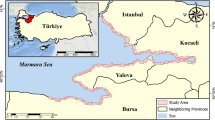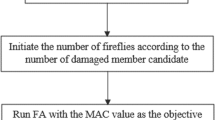Abstract
The purpose of shipping risk early-warning is that some effective measures are taken to reduce risk probability before the risk brings heavy loss. The shipping risk has the dynamic characteristic, so the key of early-warning is to choice risk early-warning index correctly and evaluate risk grade quantitatively. According to the element extension theory, the rhombus inference model is applied to establish the index system. And the problem of risk grade evaluation can be solved by the assessment model of multi-index performance parameter, which is developed by the extension engineering method. Finally, the main shipping risks and their grades are identified by the example analysis based on the statistical data, which shows the effective and feasible of the shipping risk early-warning method.
Similar content being viewed by others
References
Martins M R, Maturana M C. Human error contribution in collision and grounding of oil tankers [J]. Risk Analysis, 2010, 30(4): 674–698.
Chen Gang, Zhang Sheng-kun. Fuzzy event tree calculation of ship grounding’s probability [J]. Journal of Shanghai Jiaotong University, 2002, 36(1): 112–116 (in Chinese).
Yang Lin-jia, Yang Zuo-chang, Yu Yang. Vessel anchor dragging early warning system [J]. Journal of Dalian Maritime University, 2005, 31(1): 29–32 (in Chinese).
Zhao Yan-wei. A new method for scheme design based on the multi-level rhombus thought models [J]. China Mechanical Engineering, 2000, 11(6): 684–686 (in Chinese).
Cai Wen. Extension management engineering and application [J]. International Journal of Operations and Quantitative Management, 1999, 5(1): 59–72.
Cai Wen. Extension theory and its application [J]. Chinese Science Bulletin, 1999, 44(17): 1538–1548.
Cai Guo-liang, Ding Zan-wen. Study of n-dimensional extension set [J]. Journal of Applied Science, 2001, 19(2): 165–169.
Xie Quan-ming, Xia Yuan-you. Extension classification prediction method for the stability of rock-mass slopes [J]. Chinese Journal of Rock Mechanics and Engineering, 2003, 22(2): 438–441 (in Chinese).
Kujala P, Hanninen M, Arola T, et al. Analysis of the marine traffic safety in the Gulf of Finland [J]. Reliability Engineering and System Safety, 2009, 94(8): 1349–1357.
Author information
Authors and Affiliations
Corresponding author
Additional information
Foundation item: the Natural Science Foundation of Tianjin (No. 07JCYBJC13100)
Rights and permissions
About this article
Cite this article
Zhang, Y., Wang, B. & Tan, Zd. Research on the method of shipping risk early-warning based on matter-element theory. J. Shanghai Jiaotong Univ. (Sci.) 16, 252–256 (2011). https://doi.org/10.1007/s12204-011-1132-5
Received:
Published:
Issue Date:
DOI: https://doi.org/10.1007/s12204-011-1132-5




